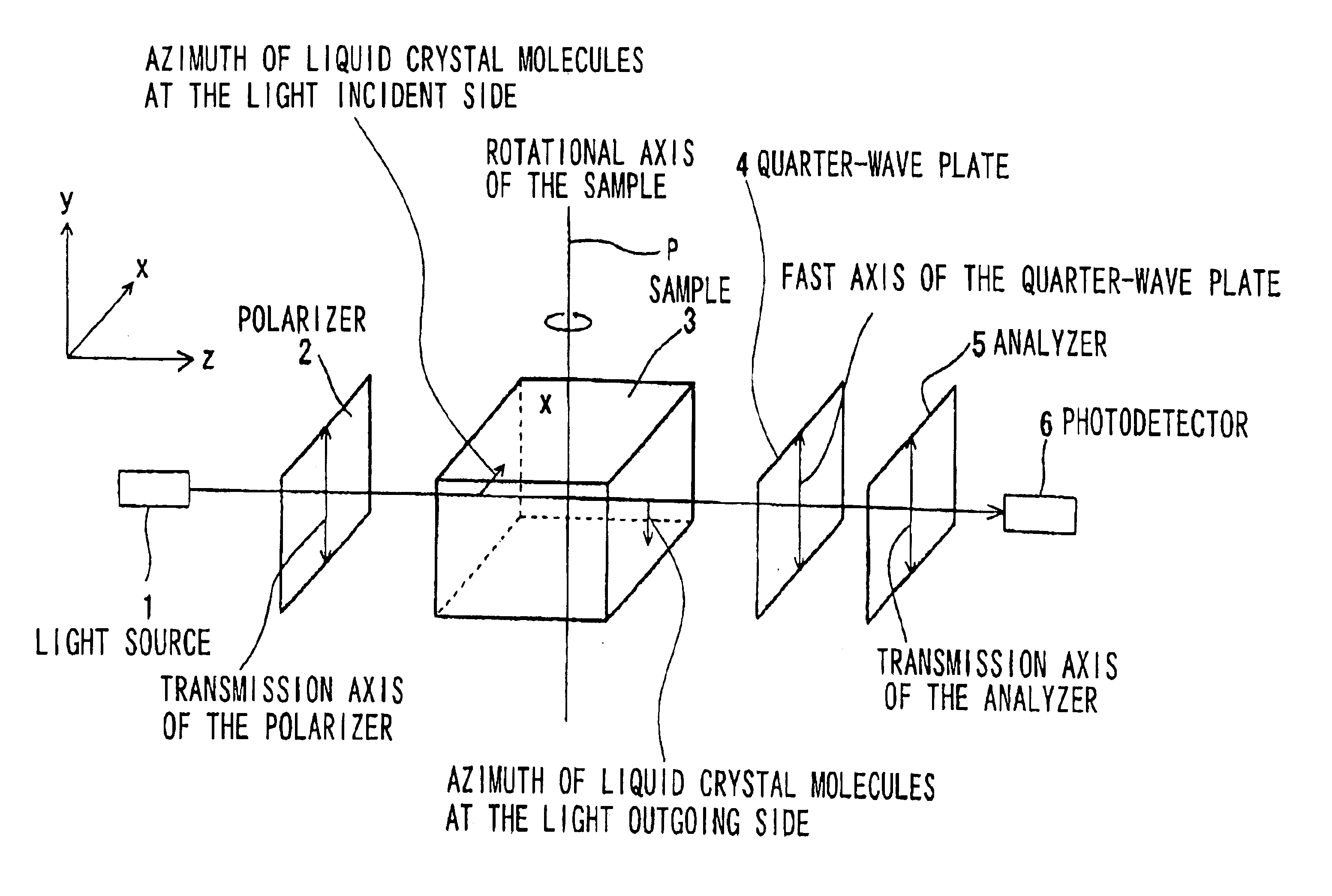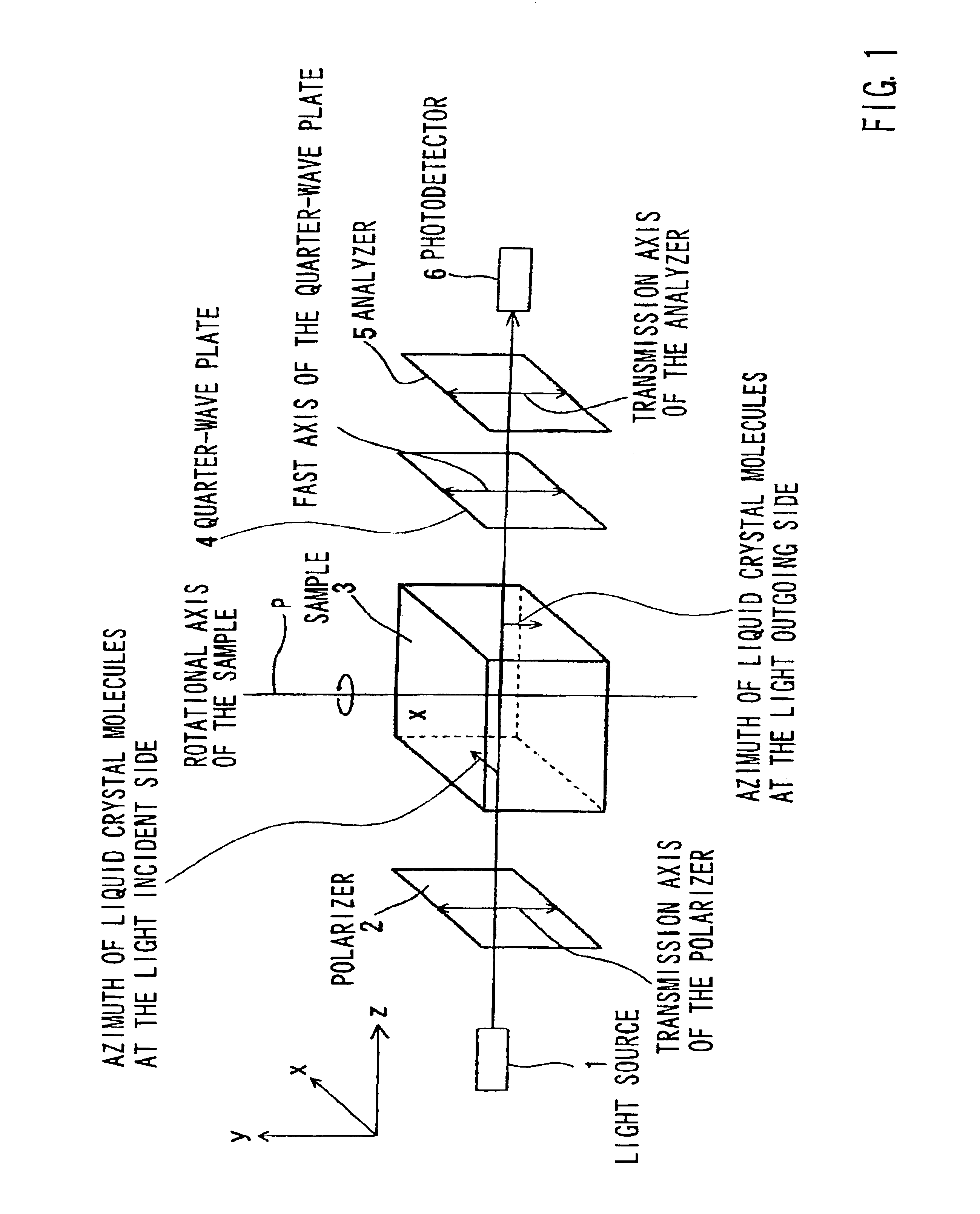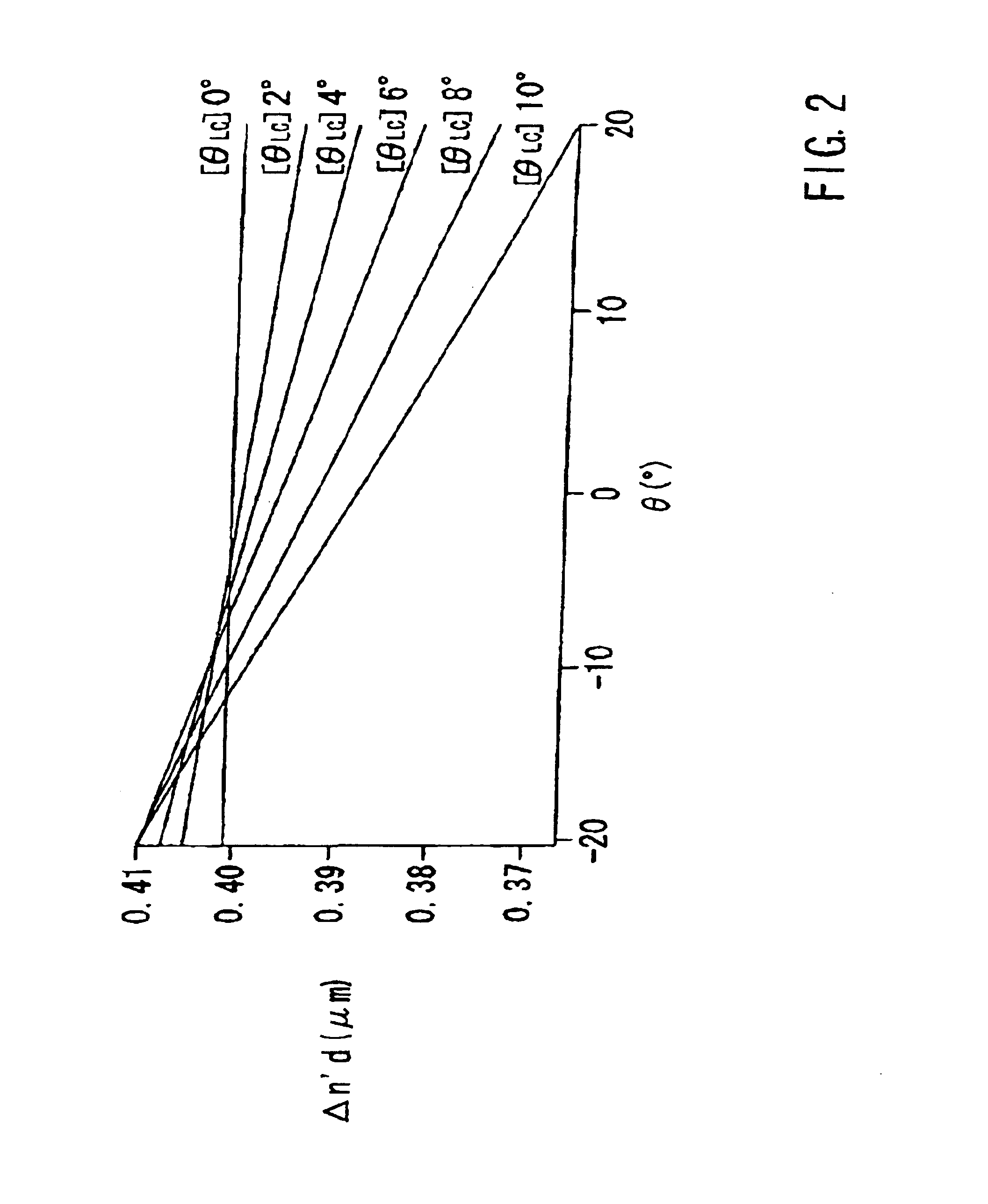Pretilt angle measuring method and measuring instrument
a technology of pre-tilt angle and measuring method, which is applied in the direction of instruments, optical apparatus testing, optical radiation measurement, etc., can solve the problems of not being able to detect requiring expensive photoelastic modulation elements (pem) for these measurements, and being difficult to achieve the effect of detecting the pretilt angle of liquid crystal cells
- Summary
- Abstract
- Description
- Claims
- Application Information
AI Technical Summary
Benefits of technology
Problems solved by technology
Method used
Image
Examples
first embodiment
An "extended Jones matrix method" or a "4.times.4 matrix method" can be used for the simulation. Accuracy can be increased by incorporating information about structural components, such as transparent electrodes or oriented films, into the simulation. The "4.times.4 matrix method" requires more computation that the "extended Jones matrix method." However, in accordance with the present invention, computation may be performed for a single wavelength. Therefore, the amount of computation may be reduced by comparison with multiple-wavelength computations using the "4.times.4 matrix method." For this reason, accuracy can be increased by changing the simulation method, even when samples are considered that have a large pretilt angle .theta..sub.s, thereby making it impossible to approximate the tilt angle .theta..sub.LC by a constant, or when the pretilt angles .theta..sub.s are different at the upper and lower boundaries.
In the present embodiment, a case will be considered in which the ...
second embodiment
The second embodiment of the present invention will be described below. In the second embodiment, the pretilt angle is determined by using Stokes parameters.
A method using Stokes parameters has been known as a method for representing the polarization state of light. The Stokes parameters of liquid-crystal cells can be calculated by using the transmitted light intensity measured in a state in which a quarter-wave plate or polarizer is disposed at the light incident side and light outgoing side of the liquid-crystal cell. This procedure is therefore very simple. A method for detecting the Stokes parameters is disclosed, for example, in Principles of Optics (M. Born, E. Wolf. Translated into Japanese by Kusagawa and Yokoda. Published by Tokai Daigaku Shuppankai) or Japanese Patent No. 3023443.
A method for detecting Stokes parameters will be described below.
For example, a measurement apparatus shown in FIG. 1 can be used for measuring the transmitted light intensity necessary in order t...
third embodiment
The apparent retardation .DELTA.n'(.theta.)d can be determined not only by a method using Stokes parameters. Thus, various methods can be used for this purpose, provided that the methods can detect the dependence of the apparent retardation .DELTA.n'(.theta.)d on the light incident angle .theta..
A third method for detecting the transmitted light intensity based upon the dependence of the apparent retardation .DELTA.n'(.theta.)d on the light incident angle .theta. will be described below. This embodiment is especially effective when the pretilt angle is determined for a sample having a twisted orientation in which the twist angle is about .+-.90.degree., as in a liquid-crystal cell.
The transmissivity T(.theta.) of the sample having a twisted orientation, which is disposed between a polarizer and an analyzer, can be represented by [Equation 19]: ##EQU14##
.gamma. is the angle between the transmission axis (polarization axis) of the polarizer and the transmission axis (polarization axis...
PUM
| Property | Measurement | Unit |
|---|---|---|
| angle | aaaaa | aaaaa |
| angle | aaaaa | aaaaa |
| pretilt angle θs | aaaaa | aaaaa |
Abstract
Description
Claims
Application Information
 Login to View More
Login to View More - R&D
- Intellectual Property
- Life Sciences
- Materials
- Tech Scout
- Unparalleled Data Quality
- Higher Quality Content
- 60% Fewer Hallucinations
Browse by: Latest US Patents, China's latest patents, Technical Efficacy Thesaurus, Application Domain, Technology Topic, Popular Technical Reports.
© 2025 PatSnap. All rights reserved.Legal|Privacy policy|Modern Slavery Act Transparency Statement|Sitemap|About US| Contact US: help@patsnap.com



